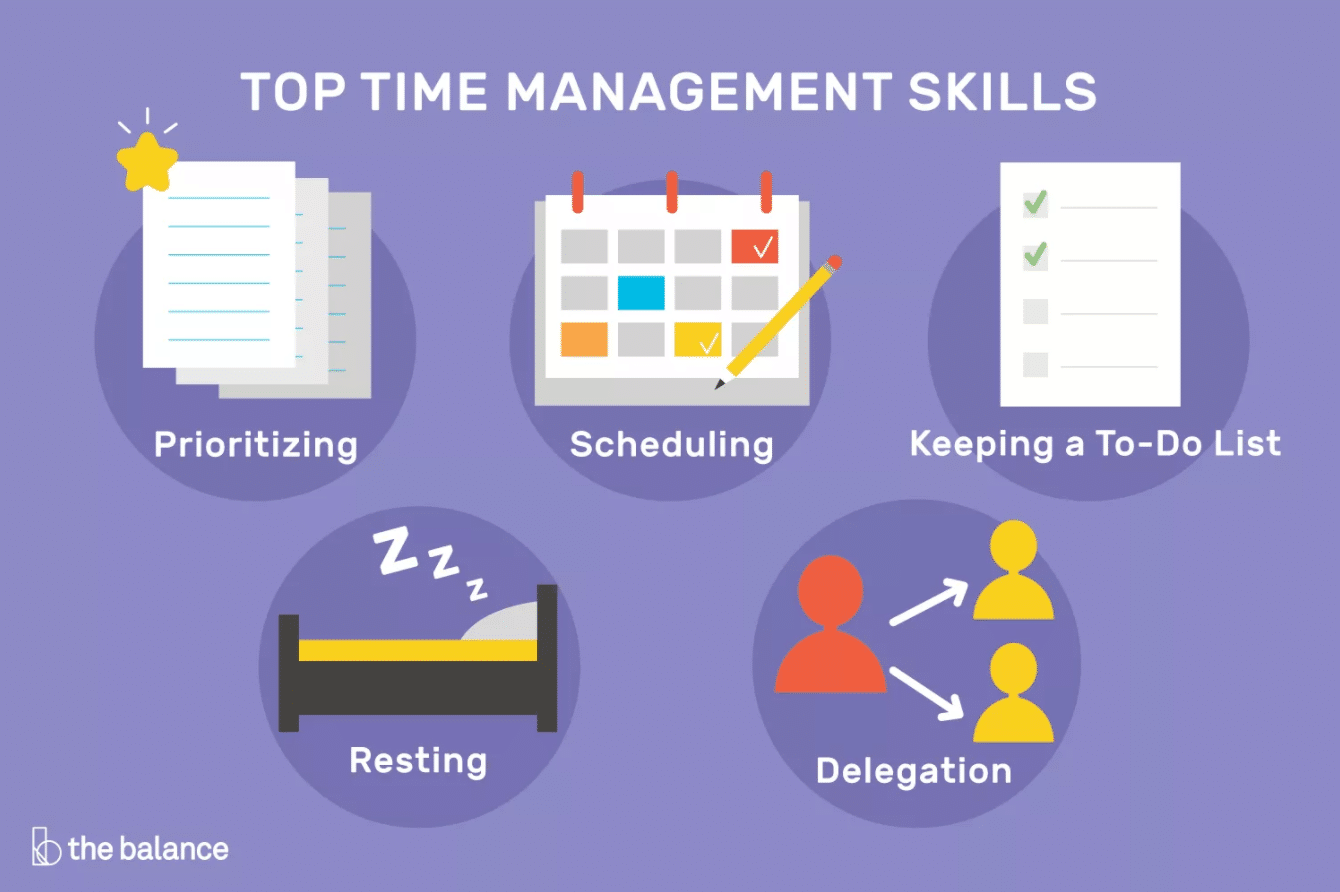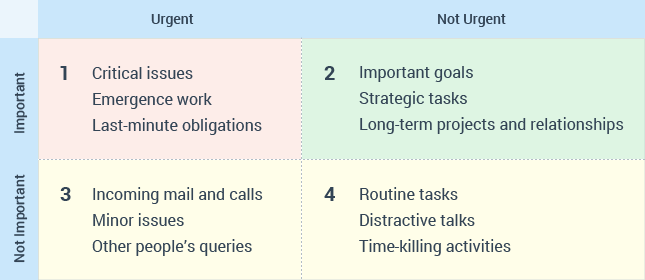A business is only as good as its employees. Even with the best video conferencing technology and most creative products or services, a company won’t achieve success without productive people. Poorly motivated and disorganized workers have a direct impact on the overall performance of the company and on its revenue.
Productivity needs to be a visible business issue, and every manager and employee should understand what productivity is and how it’s measured. Given this, it’s surprising to see how many companies—especially small businesses—fail to understand the importance of identifying productivity or know how to find out where their company stands.
⭐ Ready to go hybrid or remote? ⭐
Here’s the secret to a successful hybrid and remote-first workplace.
In this post, we’ll cover:
- What is productivity performance in the workplace?
- How to measure productivity levels in the workplace
- How to ensure productivity growth with good time management
What is productivity performance in the workplace?
When we talk about workplace productivity, we’re generally referring to how much work is accomplished in a particular period of time. When a business is functioning at maximum capacity, productivity should also be maximized. Unfortunately, that’s not always the case.
Why is a company’s productivity important?
Productivity is a measure of the efficiency of production. Unproductive employees affect a company’s bottom line, costing potentially millions of dollars. Highly productive employees, on the other hand, mean greater profits for companies—being able to provide more goods and services to consumers leads to business growth.
How to measure productivity levels in the workplace
Every company has a different set of employees, with specific skills and their own distinct customer base. It’s essential, therefore, to work out the best way to measure productivity for your particular business and to then make sure employees understand this.
Senior managers need to know what helps and hinders overall productivity, since they’re responsible for helping workers achieve their potential. They also need to understand what productivity data is being gathered and how it relates to their short-term and long-term goals.
Productivity analysis is based on inputs versus outputs
Team leaders should be able to measure the productivity of their team or individual team members on a weekly, monthly, or quarterly basis. To assess productivity, it’s first of all important to establish employees’ “outputs” and identify the best metrics that record their results.
The simplest way to measure productivity is labor productivity. Imagine you have a small distillery that only produces one product, for instance, bottles of gin. Labor productivity can be worked out using the number of gin bottles produced per time period and the hours worked. You have three staff, and over one day, it looks like this:
| Labor input (hours) | Output (bottles of gin) | Labor productivity (gin bottles per hour) | |
| Factory floor staff | 16 | ||
| Admin staff | 8 | ||
| Total: | 24 | 144 | 6 |
However, this only works at the simplest level. Multi-factor productivity takes into account other factors, such as the differences in input between different types of work, including capital inputs (like office rent), and the gross value added.1
Whilst calculating labor productivity is a great way to get a quick idea of how you’re doing, spending the time doing a full multi-factor productivity analysis will give you a more thorough assessment.
Once you’ve established goals and key metrics and have your initial results, you’ll know how to go about boosting team productivity.
Addressing productivity issues can be challenging
Finding effective ways to boost productivity is a challenge many companies struggle with, especially given the recent move towards remote working.
Workplace productivity is about completing goals in the shortest amount of time possible, without sacrificing the quality of the work produced. In order to do more of their best work, managers need to help them optimize their time management. There are several good ways to do this.
Using productivity measurement techniques will help evaluate productivity and reveal how much time gets wasted. This could be time spent on non-essential tasks, or simply employees procrastinating on social media. If you assess that employees have reasonable workloads yet are underperforming, the most likely reason is that they’re bad at time management.
Things to look out for in employees in order to identify inefficient time usage include:
- Achieving poor results at the end of a set period of time
- Procrastination
- Employees concentrating too much on future events without performing the right tasks at hand
- Talking about doing something but not actually doing it
- Attempts to multitask that lead to nothing being completed
How to ensure productivity growth with good time management

1. Create lists
All time management systems involve some form of list creation. It’s impossible to carry tons of information in our heads. By creating lists, such as a daily schedule, people to call, or tasks to complete over a set period of time, you’re creating a written reminder.
Prioritize items that are most urgent so you know which to tackle first. To help identify important vs non-urgent tasks use a time management matrix.

When working with lists, it’s essential to fully commit to it. Lists often fail because they are either too long, too vague, or not clear of what actually needs to be done. To overcome these problems, lists need to be clear and tasks must be simple.
Aim to compile lists at the end of the day. Planning ahead is essential. Plus, with a list to work from, it’s possible to get started working right away rather than spending an early morning planning what to do.
You could also consider implementing what’s known as dynamic time management, whereby tasks are allocated for shorter periods of time. This ensures the focus rests on high-priority tasks that don’t require lengthy to-do lists.
2. Complete important tasks first
It sounds obvious, but it’s worth repeating. Tackle the most crucial tasks first. Even if an employee doesn’t do anything else that day, they will have achieved success in completing the important things they needed to.
It’s up to the team leader to manage the team effectively and help the team learn how to prioritize. As the number of tasks grows, it can be difficult for team members to concentrate on important activities. They may find themselves multitasking and spending less time on more urgent tasks.
Be sure to communicate the highest priorities to the team and direct them to the most important tasks. That way, they’ll know what to focus on and spend their time more efficiently.
Break down large projects into smaller more actionable tasks. Large projects with strict deadlines can overwhelm a team, disrupting work-life balance and leading to stress and distraction. Breaking it up into smaller, more manageable tasks can help individuals keep track of their progress.
3. Create a schedule and stick to it
Lists can act as a blueprint for your schedule. Encourage workers to create a schedule for the day, the week, the month, or whatever suits their level of commitments and project lengths. Ideally, a mix of short-term and long-term goals is best.
Reserve time slots for planned tasks and activities to keep the team focused and more efficient. This can be more challenging if some of your team members are working from home. However, sticking to a schedule will make sure team members are on top of everything and not wasting time thinking about what to do next.
It’s also important to point out that we’re all human, so things never go entirely to plan. Make sure to leave some time in the workday for breaks and ad hoc, unplanned events. Taking some time out to recharge between tasks will help the team concentrate fully on the next task in hand.
4. Knowing when to say “no” leads to improved productivity
There are times when employees have too many commitments on the go at once, and it’s unrealistic to try to complete all of them. More productive people tend to get handed more to do, after all. While it’s good to know how to juggle multiple projects, it’s important to recognize when things are getting out of hand. To avoid this happening, make sure you team members know how to say no to certain things, so they can focus on the most important tasks.
5. Group tasks together
When several tasks need doing and they are similar in nature—e.g., making video calls to multiple clients on the East Coast—it’s good practice to batch them together and work on them consecutively, rather than approaching them in an ad hoc way. Different tasks require a different kind of thinking, so it makes sense to approach similar tasks while you’re in the zone.
6. Minimize meetings to boost team productivity
Meetings are important, especially with so many of us now working remotely. They help you to check on the team’s progress and make sure everyone understands their roles and tasks to be accomplished.
However, too many remote meetings get in the way of getting things done. Rather than eliminating meetings, make sure you optimize them:
- Keep meetings brief and focused so everyone feels they are there for a reason.
- Make sure the technology is working beforehand, e.g. check that your video-conferencing software is set up so time isn’t wasted on technicalities.
- If spread over multiple time zones (for instance, if the United States team is catching up with Europe), ensure only those who need to be involved are.
- Make sure everyone respects each other’s time. If someone is consistently late for a meeting, make it known that this isn’t acceptable.
- Respecting time is key to productivity, and this needs to be conveyed to all the team members.
7. Eliminate distractions to see productivity growth
Make sure employees direct all their attention to the important tasks in hand. They should feel fully immersed in their work as they complete tasks. Unnecessary browser tabs should be closed and the phone put on silent to avoid distractions. Cultivating a calm, organized workspace is an important part of remaining focused.
It could help to download a distraction blocker like Freedom, which blocks distractions on both websites and apps across all devices.2

Investing in automation can make a huge difference here too, as it can remove repetitive, distracting tasks. Economists and researchers at McKinsey estimate automation could increase productivity growth by between 0.8 and 1.4% annually.
8. Make use of idle time
Employees will have natural downtime during the day, such as when they’re sitting on the subway or train. These minutes could be used for something productive, like listening to a podcast or watching an educational video on YouTube.
While downtime is personal time, it can still be pointed out that this time could help them become more productive in their working day. Just ensure you help support a healthy work-life balance, as stress can decrease productivity.
9. Keep track of time for increased productivity
Keeping track of time spent working on daily tasks can help a lot when it comes to calculating how much time each activity takes.
As well as how much time is wasted on unexpected things:
- Use apps to track progress of projects.
- Encourage workers to keep track of their progress on a project, visually. Then they can update completed tasks and keep themselves motivated.
- Consider adding time blocking into your time management strategy. This is a productivity technique that helps you plan your days in blocks, creating a template for daily activities. Tasks are allocated to certain blocks along with intermediate buffer times.
10. Discourage overtime and multitasking
When workers feel the need to put in extra hours because they can’t complete tasks within working time, there’s a problem that needs to be addressed. Contrary to popular belief multitasking doesn’t lead to increased productivity.
Research shows that our brains lose up to 40% of productivity when switching tasks.4 Focusing on one task at a time leads to greater satisfaction and greater performance.
Productivity
37% of respondents to a survey by Blue Wren say they don’t have the time to measure productivity. However, 40% of these companies also say time constraints stop them from becoming more productive. It’s apparent that to win time back, these companies need to spend time to save time.
The benefits of measuring productivity and taking measures to rectify instances of poor productivity will reap bigger rewards than the initial time commitment involved.
Good time management is at the core of productivity and enables employees to accomplish more in shorter periods of time. Any extra time gained by good time management can be used to take advantage of learning opportunities, which can aid career development and ensure employees become even more productive.
As we have seen, there are many ways to tackle the issue of time management. From downloading apps, to creating lists, and more, it’s also essential that employees understand why time management is so important. Otherwise, these methods aren’t going to work.
If you take the initiative and start working towards changing employees’ time management habits, you’re well on the way to improving productivity. As well as creating a healthier working environment for all.
Originally published Jan 19, 2021, updated Jan 18, 2023



